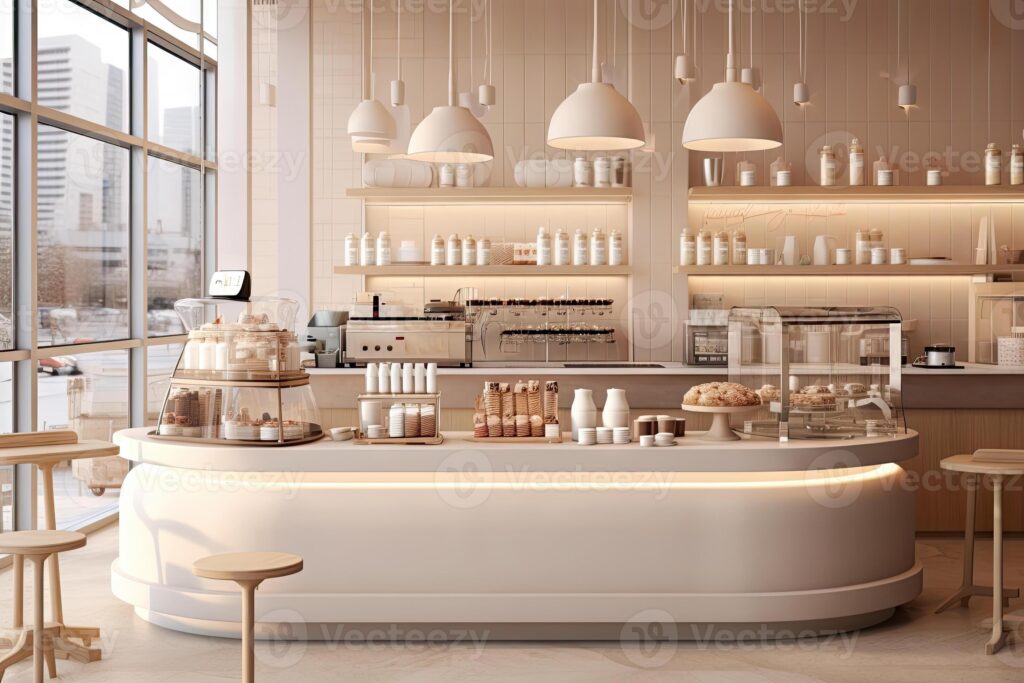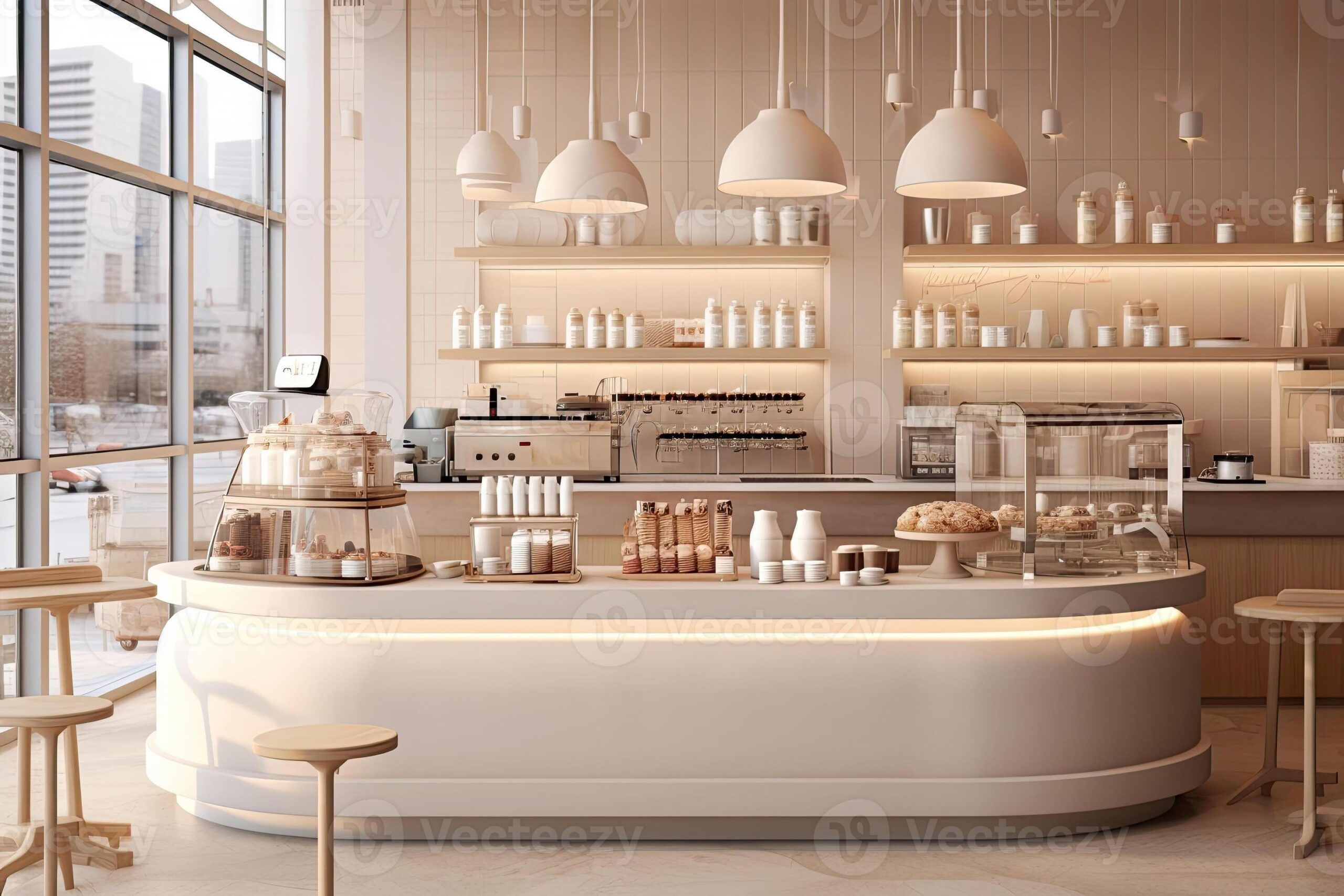
Crafting the Perfect Small Coffee Shop Counter Design: Maximizing Space and Style
In the bustling world of coffee culture, the small coffee shop counter design is more than just a functional element; it’s the heart and soul of the establishment. It’s where the magic happens, where baristas craft their masterpieces, and where customers engage with the brand. For entrepreneurs and aspiring coffee shop owners, the design of this crucial space is a critical factor in both operational efficiency and aesthetic appeal. This article delves into the intricacies of small coffee shop counter design, offering insights and practical advice to help you create a space that is both beautiful and highly functional.
Understanding the Challenges of Small Spaces
Designing a small coffee shop counter presents unique challenges. Space is at a premium, demanding clever solutions to maximize efficiency without sacrificing style. Every square inch must be carefully considered, and every element must serve a purpose. The primary goal is to create a smooth workflow for baristas while providing ample space for customers to order, wait, and enjoy their beverages. This requires careful planning, from the placement of equipment to the selection of materials.
Essential Elements of a Functional Counter Design
A well-designed small coffee shop counter integrates several key elements:
- Workflow Optimization: The counter layout should facilitate a logical flow for baristas, from order taking to beverage preparation and service. Consider the ‘triangle’ principle: placing the espresso machine, grinder, and point-of-sale (POS) system within easy reach.
- Equipment Placement: Strategic placement of equipment is crucial. Ensure all equipment is easily accessible for baristas and that there’s sufficient counter space for food preparation and display. Consider under-counter refrigerators and ice machines to save space.
- Storage Solutions: Ample storage is essential for coffee beans, cups, lids, syrups, and other supplies. Utilize shelves, drawers, and cabinets, and consider incorporating overhead storage to maximize vertical space.
- Customer Interaction Zone: The area for customer interaction should be inviting and user-friendly. Provide space for the POS system, menu boards, and any display cases for pastries or merchandise. Ensure the counter height is comfortable for both customers and baristas.
- Aesthetics and Branding: The counter design should reflect the overall brand identity of the coffee shop. The materials, colors, and finishes should create a cohesive and appealing atmosphere.
Maximizing Space in Your Small Coffee Shop Counter Design
Space-saving strategies are paramount when designing a small coffee shop counter. Here are some effective techniques:
- Compact Equipment: Opt for smaller, space-saving equipment, such as a compact espresso machine or a modular grinder.
- Vertical Storage: Utilize vertical space by installing shelves, cabinets, and overhead racks. This can free up valuable counter space.
- Under-Counter Solutions: Incorporate under-counter refrigerators, ice machines, and storage drawers to keep the counter clear and uncluttered.
- Built-in Features: Integrate features like a built-in cup dispenser or a recessed trash receptacle to save space and maintain a clean look.
- Smart Layout: Plan the layout carefully to minimize wasted space. Consider the workflow and ensure that everything is within easy reach.
Choosing the Right Materials for Your Counter
The materials you choose for your small coffee shop counter design will significantly impact its functionality, durability, and aesthetic appeal. Consider these options:
- Wood: Wood offers a warm and inviting feel. However, it requires regular maintenance and is susceptible to spills and stains. Consider a durable, sealed wood finish.
- Stainless Steel: Stainless steel is a popular choice for its durability, hygiene, and modern aesthetic. It’s easy to clean and resistant to stains and spills.
- Quartz: Quartz is a non-porous material that is highly resistant to stains and scratches. It comes in a variety of colors and patterns, making it a versatile option.
- Concrete: Concrete offers a contemporary and industrial look. It’s durable and can be customized with various finishes.
- Laminate: Laminate is a cost-effective option that comes in a wide range of colors and patterns. It’s durable and easy to clean but may not be as resistant to heat or scratches as other materials.
Designing for Efficiency: The Barista’s Perspective
The small coffee shop counter design must prioritize the barista’s needs. Here’s how to create an efficient workspace:
- Ergonomics: Ensure the counter height is comfortable for the baristas and that equipment is positioned at a convenient height.
- Workflow: Plan the layout to minimize steps and movement. The espresso machine, grinder, and POS system should be within easy reach.
- Organization: Provide ample storage for supplies and equipment. Keep frequently used items within easy reach.
- Lighting: Adequate lighting is essential for visibility and productivity. Consider task lighting over the work area.
- Accessibility: Ensure the counter is accessible for all baristas, regardless of their height or physical abilities.
Aesthetic Considerations: Creating a Welcoming Atmosphere
The aesthetic appeal of the small coffee shop counter design plays a crucial role in attracting customers and creating a positive experience. Consider these factors:
- Color Palette: Choose a color palette that reflects your brand identity and creates a welcoming atmosphere. Neutral tones can provide a clean and modern look, while brighter colors can add energy and personality.
- Lighting: Lighting can dramatically impact the ambiance. Consider a combination of ambient, task, and accent lighting.
- Materials: The materials you choose will impact the overall look and feel of the space. Consider the texture, color, and finish of each material.
- Branding: Incorporate your brand elements, such as your logo, colors, and tagline, into the counter design.
- Seating: If space allows, consider adding seating near the counter to encourage customers to linger.
Integrating Technology into Your Counter Design
Technology plays an increasingly important role in coffee shops. Integrating technology seamlessly into your small coffee shop counter design can improve efficiency and customer experience. This includes:
- Point-of-Sale (POS) Systems: Choose a POS system that is easy to use and integrates with your other systems, such as online ordering and inventory management.
- Digital Menu Boards: Digital menu boards are a modern and flexible way to display your menu. They can be easily updated and customized.
- Wireless Charging Stations: Provide wireless charging stations for customers to charge their phones and devices.
- Table Management Systems: If you have table service, consider using a table management system to manage reservations and seating.
- Order Kiosks: Order kiosks can help reduce wait times and improve efficiency, especially during peak hours.
Examples of Successful Small Coffee Shop Counter Designs
Let’s explore some successful examples of small coffee shop counter designs to provide inspiration:
- Minimalist Design: A minimalist design focuses on clean lines, neutral colors, and uncluttered surfaces. This approach can create a sense of spaciousness and sophistication.
- Industrial Design: An industrial design often incorporates exposed brick, metal accents, and concrete surfaces. This style creates a raw and edgy aesthetic.
- Rustic Design: A rustic design uses natural materials, such as wood and stone, to create a warm and inviting atmosphere.
- Modern Design: A modern design often features sleek lines, bold colors, and innovative materials.
- Themed Design: Themed designs can reflect a specific concept or brand identity, such as a coffee shop with a vintage or bohemian theme.
Budgeting for Your Counter Design
Budgeting is a critical aspect of any small coffee shop counter design project. The cost can vary significantly depending on the size of the counter, the materials used, and the complexity of the design. When creating a budget, consider the following:
- Materials: The cost of materials will vary depending on the type of materials you choose.
- Labor: Labor costs will depend on the complexity of the design and the experience of the contractors.
- Equipment: The cost of equipment, such as espresso machines, grinders, and refrigerators, can vary significantly.
- Permits: You may need to obtain permits for your construction project.
- Contingency: It’s essential to include a contingency fund to cover unexpected costs.
The Importance of Professional Design Services
While it’s possible to design a small coffee shop counter yourself, hiring a professional designer can offer numerous benefits. A professional designer can:
- Optimize Space: A professional designer can help you maximize space and create an efficient layout.
- Create a Cohesive Design: A designer can help you create a cohesive and aesthetically pleasing design that reflects your brand identity.
- Source Materials and Equipment: A designer can help you source high-quality materials and equipment at competitive prices.
- Manage the Project: A designer can manage the entire project, from concept to completion, ensuring that it stays on schedule and within budget.
- Ensure Compliance: A designer can ensure that your design complies with all building codes and regulations.
Common Mistakes to Avoid
When designing a small coffee shop counter, it’s important to avoid common mistakes that can compromise functionality and aesthetics:
- Ignoring the Workflow: Failing to consider the workflow can lead to inefficiencies and frustration for baristas.
- Insufficient Storage: Not providing enough storage space can lead to clutter and disorganization.
- Poor Lighting: Inadequate lighting can make the space feel dark and uninviting.
- Ignoring Ergonomics: Ignoring ergonomics can lead to back pain and other health issues for baristas.
- Lack of Branding: Failing to incorporate your brand identity into the design can make your coffee shop less memorable.
Final Thoughts on Your Small Coffee Shop Counter Design
The small coffee shop counter design is a critical element of any coffee shop. By carefully considering the challenges of small spaces, understanding the essential elements of a functional counter design, and choosing the right materials, you can create a space that is both beautiful and highly efficient. Remember to prioritize the barista’s perspective, integrate technology, and incorporate your brand identity. By avoiding common mistakes and seeking professional help when needed, you can craft the perfect small coffee shop counter design that will attract customers, boost efficiency, and enhance the overall coffee shop experience.
From a design perspective, the small coffee shop counter design is an art form. The design should be a fusion of functionality and aesthetics. It is where the customer’s journey begins and ends. Therefore, a well thought out small coffee shop counter design is paramount to the success of the coffee shop.
Ultimately, the goal of your small coffee shop counter design should be to create a space that is both functional and aesthetically pleasing, and it should reflect your brand identity. Careful planning and attention to detail will help you achieve the perfect balance of form and function, resulting in a thriving coffee shop. A well-designed small coffee shop counter is the cornerstone of a successful coffee shop business. The small coffee shop counter design is a reflection of the shop’s identity and values. Every aspect of the small coffee shop counter design contributes to the overall customer experience. The choice of materials, the layout, and the lighting all play a crucial role. The small coffee shop counter design is a key element in creating a welcoming and efficient space.
[See also: Coffee Shop Layout Ideas, Optimizing Coffee Shop Workflow, Choosing the Best Coffee Shop Equipment]


